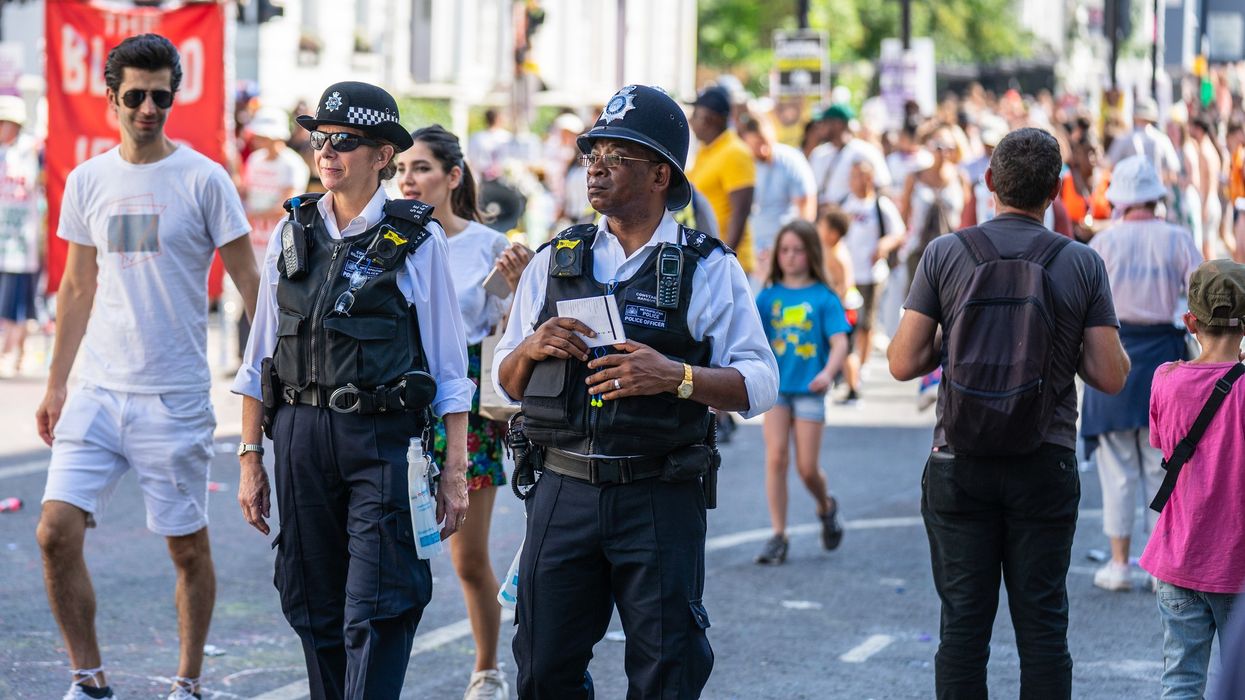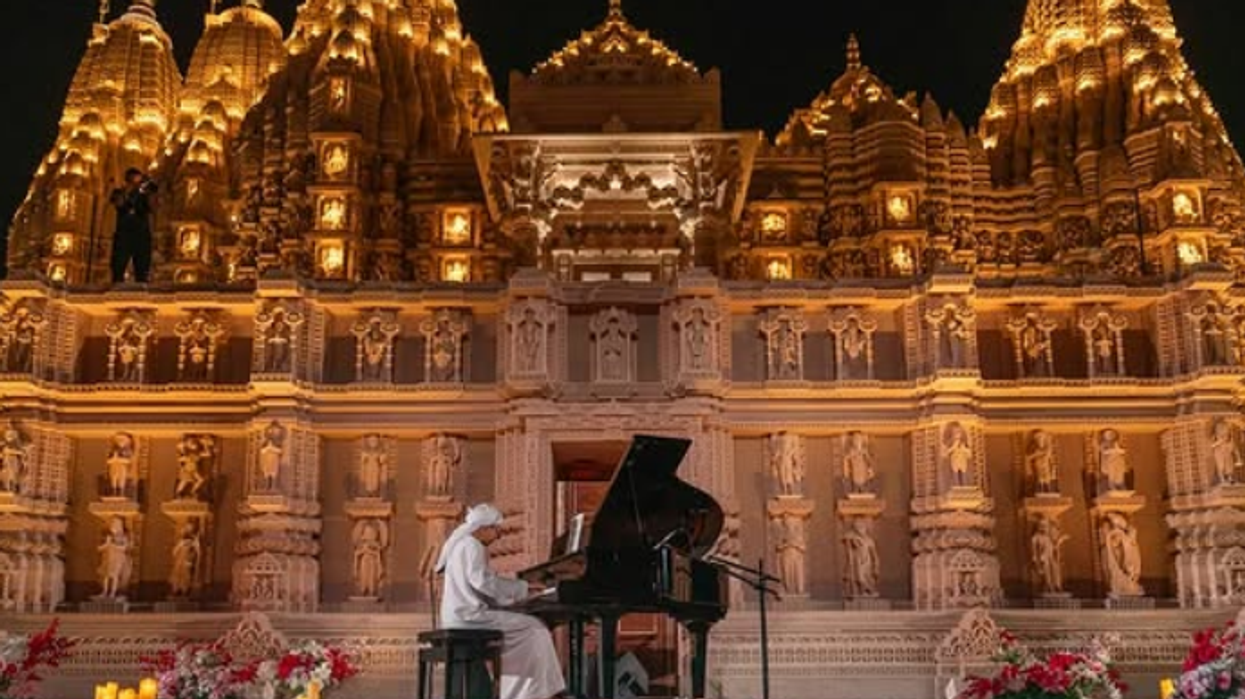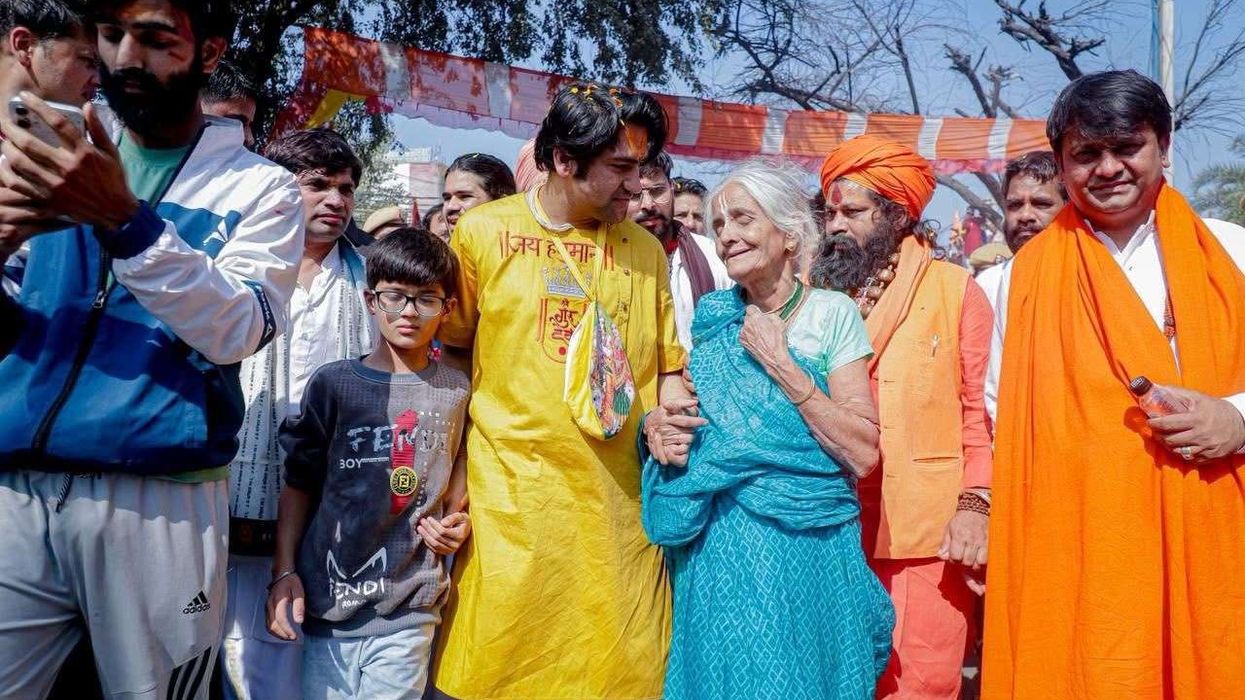As Asian and Black police attack recruitment of new officers, we reveal that not one single force represents diverse communities
The president of the National Black Police Association (NBPA) has criticised the way police forces across England and Wales have recruited new officers as a “once in a lifetime opportunity missed”.
Speaking exclusively to Eastern Eye, Inspector Andy George, said the NBPA was “very concerned” that not one single force was representative of the communities it protected and served.
The figures were obtained under freedom of information and national data which is publicly available.
“This was a once in a lifetime opportunity to restructure and get the demographics of our workforce, right,” said George. “It's so important that we have police forces and police services that are representative of the communities.
“It's not just around diversity gone mad or virtue signalling, this is about an operational necessity to get things right.
“To have officers and staff members in place that understand all the communities that have contacts with them, because what you have to remember is every person you see from a black or Asian background and uniform is a community member, as well as being a police officer.”
These officers, said the NBPA president, are the difference between a positive or negative experience faced by minority groups.
“They're a valuable resource for that we have internally now and we need to have more of those people from those backgrounds in key decision making arrays, so that we can actually understand what emerging crime trends are, what community needs are, and put our resources and align our resources to meet those needs.”
Both the Home Office and National Police Chief’s Council (NPCC) told Eastern Eye that they want forces to do more in tackling the lack of diversity in the police.
“We know there is more to do,” said a spokesperson from the Home Office.
Despite forces trying to improve the diversity of their officers and a government scheme to boost recruitment, the figures show a worrying picture.
Data is published monthly breaking down each force by ethnicity. All forces are below the percentage of Black, Asian, and Minority Ethnic (BAME) officers compared to the population of BAME residents in the area they serve.
The force with the biggest difference was the Metropolitan Police. The area that the force represents has a BAME population of 40 per cent.
But as of June 2021 Black, Asian, and mixed race full-time serving officers make up only 14 per cent of the force. This excludes part-time officers and specials.
A spokesperson from the Metropolitan Police force said, “We want to make real progress as quickly as possible, which is why we are constantly striving across multiple fronts to work towards achieving this aspiration.
“Whilst progress has been made, if we are truly to reflect London in our workforce, we have much further to go,” they added.
“We recognise that trust in the Met is still low in some communities, and one of the top priorities is to increase public confidence, particularly among Black, Asian and multiple ethnic heritage communities.
“A wide range of activities have already been carried out to build stronger relationships with all diverse communities and understand their concerns, and these continue at pace.”
As of July 2021, the Metropolitan Police have slightly increased BAME representation.
More than 5,220 officers are from under-represented communities who make up 16 per cent of all front-line staff.
Another force struggling is Leicestershire Constabulary. Like the Met, the number of ethnic minority officers do not reflect the community they serve.
Non-white residents make up 21 per cent of the force area.
Yet just eight per cent of the full-term serving officers are from ethnic minority communities.
A police spokesperson from Leicestershire Police said, “It is undeniable that we need to be more representative within our force and reflect the communities that we serve.
“We are working hard to understand our workforce, creating an inclusive culture and environment where staff can develop.
“In the past, many ethnic minority communities have not seen the police as a career they want to go into. This may be due to a general distrust of policing or some of the negative experiences BAME staff have had.”
“It is our objective to recruit a force, fully utilising positive action measures, which is as diverse as the communities we serve in Leicester, Leicestershire and Rutland.”
Dal Babu is a former chief superintendent and founder of the Met’s Muslim Association.
Having a workforce that represents the community is something that he campaigned for during his time in the service.
“The police have never actually represented the public,” said Babu.
“When it comes to south Asian and Black people, we remain hugely under-represented.
“I do not think there is a lack of recruits either. So, we need to look at the procedures, how officers are treated, and what opportunities they get once they are in the organisation. There needs to be a big shakeup.”
Analysis
Evaluating Operation Uplift
The success of Operation Uplift varies across the police forces in England and Wales. Overall, while some forces currently lack representation from ethnic minority communities, many are making improvements.
Comparing the percentage of BAME officers recruited through the process with the percentage of non-white officers in the workforce reveals some room for optimism.
This is especially relevant for forces such as the Metropolitan Police, City of London, and Leicestershire forces.
These three forces are showing signs of improvement by recruiting more ethnic minority officers since 2019.
Most forces appear to be tackling the lack of diversity.
But there are some who critics would say are not improving enough.
Bedfordshire Police, in their recruitment of BAME officers, are both below their area and their current workforce.
Chief Constable Garry Forsyth said, “A targeted recruitment campaign transformed us from the third least representative to the third most representative police in the country.
“However, there is still much more work to do.
“We know there are longstanding trust and confidence issues in policing nationally among ethnic minority communities, while from a recruitment perspective we really struggle to recruit from Black communities in particular.”
Operation Uplift has given the police a chance to rectify the shortage of under-representative communities in the force.
Several forces have taken positive steps. NBPA president, Andy George told Eastern Eye that the Uplift scheme has been beneficial.
He said, “The uplift team have been good at reaching out to the NBPA. They have been more open and engaged than they have in the past.
“This is about levelling the playing field and giving everyone a fair chance.
“There have been many positives from the uplift. We need to take the lessons we have learnt forward.”
Is Operation Uplift working?
Back in September 2019, Boris Johnson announced a new government scheme to recruit 20,000 new police officers.
Called Operation Uplift, forces were set targets to bring in a certain number of recruits.
Speaking at the time, Home Secretary Priti Patel said that “this is the people’s priority, and it is exactly what the government is delivering.”
The total number of police officers has increased since the announcement of the scheme.
However, freedom of information requests show that police forces through the process are not recruiting enough officers from minority communities.
Speaking about the operation, a Home Office spokesperson said, “The policing minister wrote to all 43 police forces earlier this year, urging them to ensure that they seize the opportunity presented by the uplift to recruit officers from a wide range of backgrounds.”
The forces getting it right
Eastern Eye sent freedom of information requests to all the police forces. Out of the 43 requests, 34 responded.
The timeframe requested was from October 2019 to May 2021.
Presented with the chance to increase the diversity of serving officers some workforces have made significant improvements.
One force which stands out is West Yorkshire Police. Their response showed that 26 per cent of recruits through Operation Uplift have been from ethnic minority communities.
This exceeds the 17 per cent of non-white people living in the force area.
Responding to the figures, West Yorkshire Police said, “Being representative of the communities we serve is a continued focus through recruitment and retention of our police officers and staff.
“A diverse workforce is vitally important as it will bring different thinking, backgrounds, experiences. Plus, different upbringings to help ensure we have the trust, confidence and understanding of our communities now and in the future.”
Northumbria Police are another force which appears to be successful in their recruitment of racially diverse officers. The 12 per cent of recruits being from BAME backgrounds is just over double the percentage of non-white residents.
A spokesperson from the force said, “We are extremely proud of the success of our ongoing recruitment campaign, which includes proactively encouraging people from underrepresented groups to join the force.”
There are now over 10,000 police officers from ethnic minority backgrounds. More emphasis is being placed on reaching underrepresented communities.
The College of Policing continues to provide guidance. Furthermore, the National Police Chiefs’ Council (NPCC) published its first Diversity, Equality, and Inclusion strategy in October 2018.
Forces are also given a toolkit that includes practical steps to increase the recruitment of officers from BAME backgrounds.
Despite the recruitment campaigns and the guidance available, attracting recruits from ethnic minorities is still a problem in many police forces. The recruitment process is not just about increasing the total number of officers.
The chart shows the forces that have the largest gap between BAME officers recruited through Operation Uplift and the diverse area they serve.
Only nine per cent of recruits taken on by Thames Valley Police were from Asian, Black or mixed heritage. This is a problem the force has acknowledged.
“We are acutely aware of the gap in representation and are determinedly working hard to address this. We aspire to be a force that truly reflects the communities we serve and see our diversity as a strength.
“Barriers may exist to those from ethnic minorities from joining the police service, which is also reflected nationally and in other sectors of work.”
What do other forces say?
Assistant Chief Constable Matt Nicholls, Hertfordshire Constabulary, said, “The reasons for under-representation are complex and reflected across many UK police forces. But the constabulary is working hard to increase representation. We want our workforce to represent the communities we serve and protect.”
Eastern Eye asked the Metropolitan Police what they are doing to try to be representative of their communities. A spokesperson said, “Our most recent recruitment drive launched in July which sees diverse officers already flourishing in a variety of roles in the Met acting as ambassadors to share their career stories.”
“We have also opened up new pathways to encourage more Londoners, particular those from under-represented communities, to consider applying, such as the new apprentice route in partnership with four London universities, which allows participants to study for a degree while getting a salary for practical on the job training.”
NPCC lead for diversity, equality and inclusion, Chief Constable Carl Foulkes, said, “The legitimacy and effectiveness of UK policing is built on the relationship between the police and the public.
“While we have made strong improvements, we know we have made slow progress in increasing diversity and we must now go further and rise to this complex challenge to achieve substantial and lasting change.”
South Yorkshire Police’s director of resources, Jacqueline Bland said, “We are strongly committed to reflecting the communities in which we serve.
“In our latest recruitment period we saw an increase in applications from people within ethnic minority communities, which placed the force in the top performance quartile of all forces in England and Wales in terms of improving representation amongst new recruits.
“While we are really proud of this, we recognise the need to improve our representation and we will continually strive to do so.”
A police spokesperson from Leicestershire Police said, “We have introduced an aspirational target that one in four applicants for posts in our force with be BAME and we are currently working towards this.”
The City of London Police also said, “Diversity and inclusion is something we take extremely seriously.
“We are proud to be an inclusive employer and we have recently revised our action plan to focus on further diversifying our workforce and being representative of London’s population.”













